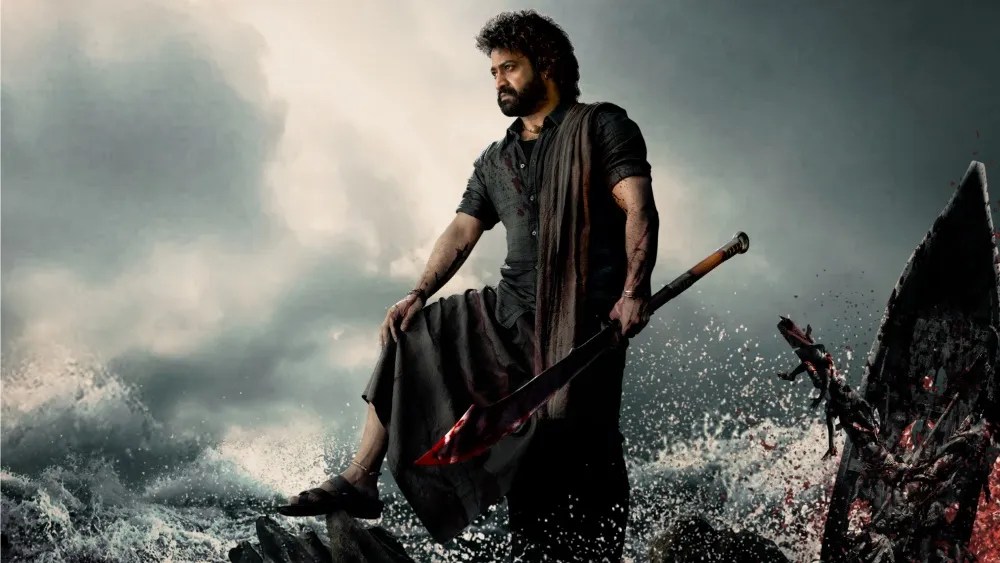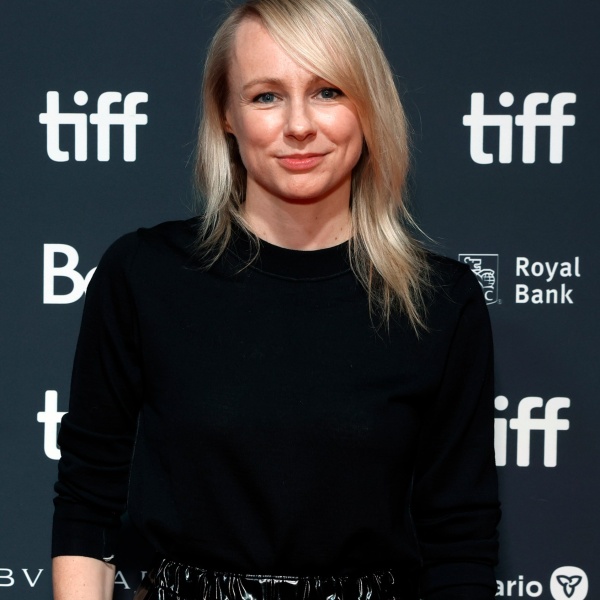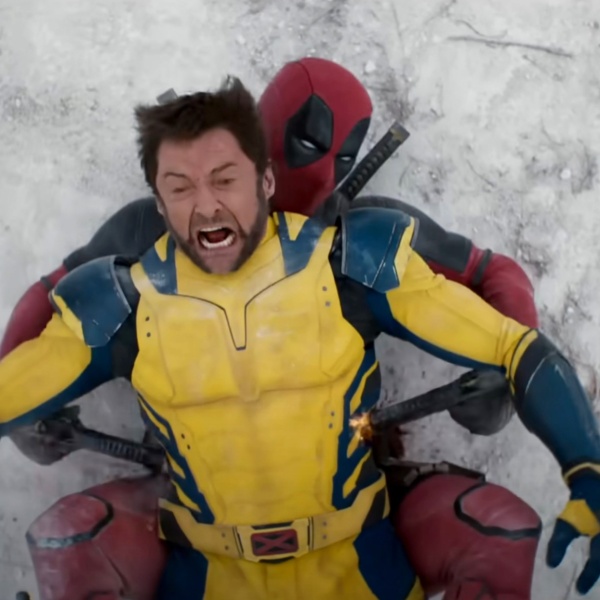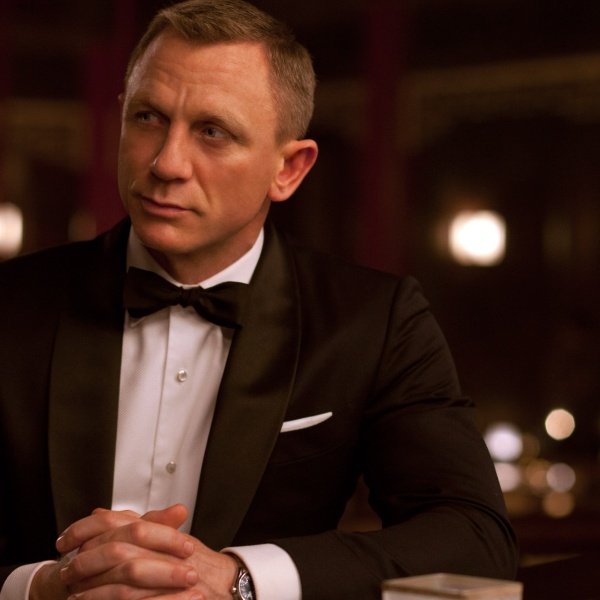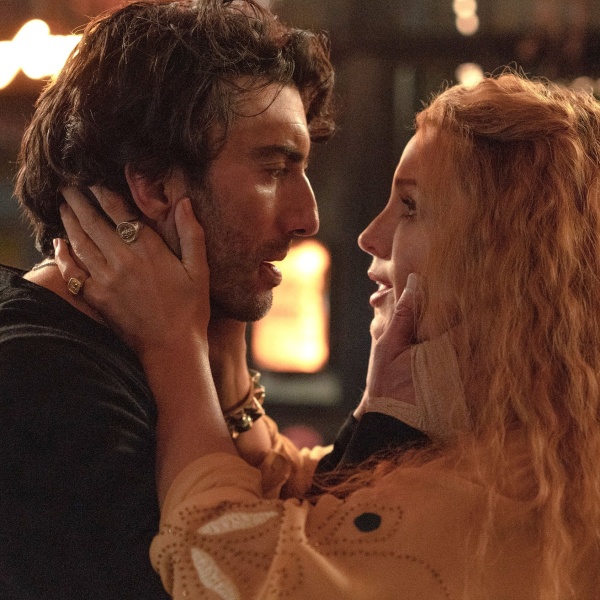At this very moment there is a painting, in a gallery in Los Angeles, by artist Nibha Akireddy. In a show curated by Rajiv Menon, the piece depicts Akireddy seated and wearing sunglasses, her swagger pouring out of the canvas and enticing the viewer instantly. In my tour of the gallery, Menon explained that Akireddy was inspired by Telugu movies to picture herself as the alpha and the hero — in a position of power that women of those films rarely get to occupy.
I saw this painting a little over a week before screening Koratala Siva’s “Devara: Part 1,” which underscores the frustrating fantasy in Akireddy’s painting. The plot is but a formality; the film‘s real purpose is to highlight star N.T. Rama Rao Jr. in any possible capacity, along with fellow male costars Saif Ali Khan, Prakash Raj, Srikanth, and dozens if not hundreds of background actors and dancers. It is a movie where a woman does not speak until 30 minutes in, and it does not happen again until as much time has passed. Hindi movie actress Janhvi Kapoor (who should still be on a “Bawaal” apology tour, but okay) is needlessly wedged into the second, not because she fits the role (she doesn’t) or elevates the love story (there is none), but in an appeal to North Indian audiences that is so transparent as to be crude.
Despite being named for Rama Rao Jr.’s Devara, the film opens with a character named Danny (Ajay), who goes to see police superintendent Tulasi (Abhimanyu Singh) in search of a man named Yethi. If you want to know who Yethi is or what purpose he serves, there’s no need to watch the rest of the film, in which he is never mentioned again — that is a “Devara: Part 2” problem, apparently. After detouring through a couple more characters, Danny ends up talking to Singappa (Raj), a village elder at the Tamil Nadu and Andhra Pradesh border in South India who begins narrating the story of Devara.
Twelve years ago, Devara was the hero of his mountain community, for reasons that are murky at best. He’s a gifted fighter, the annual winner of a physical competition between the local villages, beloved husband and father, and also part of a pretty elaborate smuggling operation that involves carrying massive crates of weapons underwater with his virile associates. After the gratuitously graphic death of a child, Devara ends the weapons trade — but that doesn’t stop him from slaughtering anyone who disobeys that order, then eventually committing a massacre after which he disappears without a trace.
That’s the first half of the movie, and the better half. Rama Rao Jr. and Khan dance to “Ayudha Pooja,” and then engage in a combat sequence where at one point their hands are bound together and set aflame. A group of men try to ambush Devara on the beach, some of them disguised as sand and seaweed while they crawl like crustaceans, which is fabulous. Rama Rao Jr. enters by flying out of the sea, the kind of moment that an explanation would actively ruin. For his part, the North Indian Khan is doing — not his best Langda Tyagi, because that’s Langda Tyagi, but a convincing reminder that he makes a superb villain, commanding the screen even while he’s dubbed by another actor.
Then we pick up in the present (1996, for some reason) with the villages still living in Devara’s shadow, none moreso than his adult son Vara (Rama Rao Jr. again). This is the have where Kapoor’s Thangam deliberates at length about whether she actually likes Vara, which seems to be directly correlated with propensity for violence (which he did not inherit from his father). It’s the half where a man threatens to rape Vara’s sister and mother, so the mother (Shruti Marathe, whose character was not listed on IMDb or Wikipedia at press time) says it won’t happen, but also that if it does they will both die by suicide. Neat!
So here we are again, ostensible lightyears away from Akireddy’s vision. With a film that explicitly states “send the women and children away” in one scene, that positions every woman as a wife or a mother or victim (one of Vara’s enemies murder’s his lover for speaking out of turn), it’s hard to see why a woman wouldn’t see fit to empower herself through imagined artwork because mainstream Tollywood can’t be counted on to help. “Devara: Part 1” doesn’t openly hate women (like “Animal”), but also it does not understand, respect, value, or believe in them, nor does it care to. It is significantly more reverent of CGI sharks, which increase every scene’s value by 200 percent whenever they appear on screen (more often than you think!).
“Devara: Part 1” will likely pack cinema halls and entertain millions during its theatrical run. Anirudh’s songs will saturate social media, and the Man of Masses (Rama Rao Jr.) will have another crowd pleasing hit on his hands. But for an industry with such adoring audiences and power players like Rama Rao Jr., Kapoor, and Khan — a pan-Indian cast — it’s endlessly frustrating to watch movies like this not only fail to do better, but fail to even try.
Grade: C
“Devara: Part 1” is now in theaters.
